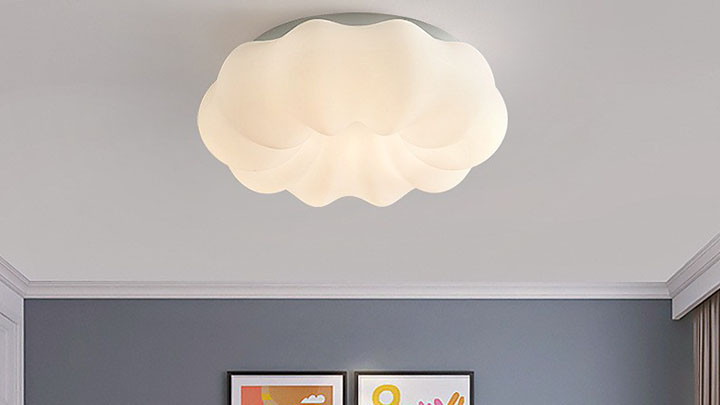How to Choose the Right Philips Lighting for Your Home
Philips is a globally recognized leader in lighting, offering a vast array of products from energy-efficient LEDs to smart, connected light systems. With so many options, selecting the right Philips light can be daunting. This guide will walk you through the key factors to consider, helping you make an informed decision that blends functionality, ambiance, and innovation.
1. Understand the Lighting Technology: LED is the Standard
Philips has been at the forefront of the LED revolution. When choosing a Philips light, you are almost certainly choosing an LED, and for good reason:
- Energy Efficiency: LEDs consume up to 90% less power than incandescent bulbs and last significantly longer, saving you money on electricity and replacements.
- Longevity: A quality Philips LED can last for 15,000 to 25,000 hours or more.
- Durability: LEDs are solid-state lights, making them more resistant to breakage.
Within Philips' LED range, you'll find different product lines like Philips LED (standard), Philips Master (for professional-grade color and performance), and Philips Hue (smart lighting).
2. Decode the Light Specifications: Lumens, Kelvin, and CRI
Forget watts—think about how the light actually performs.
- Brightness (Lumens): Lumens (lm) measure the total amount of visible light.For Ambient Room Light: A living room or bedroom may need 1,500-3,000 lm in total.For Task Lighting: A reading lamp or kitchen counter light should be brighter, around 400-800 lm per bulb.For Accent Lighting: A spotlight for artwork might only need 200-500 lm.
- Color Temperature (Kelvin): Measured in Kelvins (K), this describes the light's color appearance, from warm to cool.Warm White (2700K - 3000K): Creates a cozy, relaxing atmosphere. Ideal for living rooms, bedrooms, and dining areas.Cool White (3500K - 4100K): Clean, neutral, and energetic. Perfect for kitchens, bathrooms, home offices, and garages.Daylight (5000K - 6500K): Crisp and bluish-white, simulating natural daylight. Best for reading, detailed task work, and workshops.
- Color Rendering Index (CRI): CRI measures how accurately a light source reveals the true colors of objects. A CRI of 80 is good, but for the best results (especially in art studios or retail spaces), look for Philips bulbs with a CRI of 90+.
3. Choose Your Level of Control: From Basic to Smart
This is where Philips truly shines, offering three main tiers of control.
- a) Fixed Lighting (Dimmable):Many standard Philips LEDs are dimmable. Check the packaging to ensure compatibility with your existing dimmer switches. This is the simplest way to adjust ambiance.
- b) Connected Lighting (Philips WiZ):Philips WiZ products offer smart features at a more accessible price point. They connect directly to your Wi-Fi, allowing you to control lights via a smartphone app, set schedules, and choose from millions of colors and white tones, without needing a separate bridge.
- c) Ecosystem Lighting (Philips Hue):This is Philips' premium smart lighting system. It requires a Hue Bridge that connects to your router, creating a more robust and reliable mesh network.Unmatched Control: Control individual lights or entire rooms with extreme precision.Advanced Automation: Create routines that sync with your sunrise/sunset, or trigger lights with motion sensors.Immersive Experiences: Sync your lights with movies, music, and games through the Hue Sync app.Vast Ecosystem: Works with Alexa, Google Assistant, Apple HomeKit, and a wide range of Hue-branded fixtures, accessories, and third-party partners.
4. Select the Right Fixture and Bulb Shape
Philips offers both integrated luminaires (fixed fixtures) and replacement bulbs. Your choice depends on your need.
- Bulbs (Retrofit): If you have existing fixtures you love, simply replace the bulb.A-Shape: The standard "light bulb" shape for general use.Globe (G): Spherical bulbs for decorative pendants or vanity mirrors.Spotlights (MR16, GU10): For track lighting, recessed cans, and accent lighting.Candle (B/C): For chandeliers and sconces.
- Integrated Luminaires: These are fixtures where the LED source is built-in, designed for optimal performance and a sleek look. Examples include Philips Hue lightstrips, Hue downlights, and Philips' range of bathroom and kitchen spotlights.
5. Consider the Room's Purpose
- Living Room & Bedroom: Prioritize warm, dimmable light. A Philips Hue White Ambiance kit is perfect, allowing you to adjust the white tone from warm to cool throughout the day.
- Kitchen: Combine cool white for task lighting over counters and islands with warmer tones for the dining area. Dimmable downlights or spotlights are excellent choices.
- Home Office: Choose cool white or daylight bulbs to promote alertness and reduce eye strain. A dedicated task lamp with a high CRI is a great addition.
- Bathroom: Opt for moisture-resistant fixtures and light with a high CRI (90+) for accurate makeup application and shaving. A color temperature around 3000K-4000K is usually ideal.
- Outdoor: Ensure any bulbs or fixtures are rated for outdoor use (look for IP44 rating or higher for weather resistance). Philips has a range of outdoor-specific smart lights.
Summary Checklist
- Determine Brightness: How many lumens do you need for the space?
- Choose Color Temperature: Warm White, Cool White, or Daylight?
- Decide on Smart Features: Basic, WiZ (Wi-Fi smart), or Hue (premium ecosystem)?
- Pick the Form Factor: What bulb shape or fixture fits your setup?
- Match to the Room: Consider the room's specific activities and atmosphere.
By following these steps, you can navigate Philips' extensive catalog with confidence. Whether you need a simple bulb replacement or a whole-home smart lighting transformation, Philips has a solution tailored to create the perfect light for every moment.




